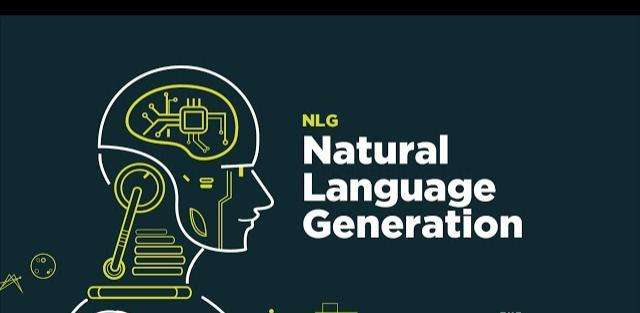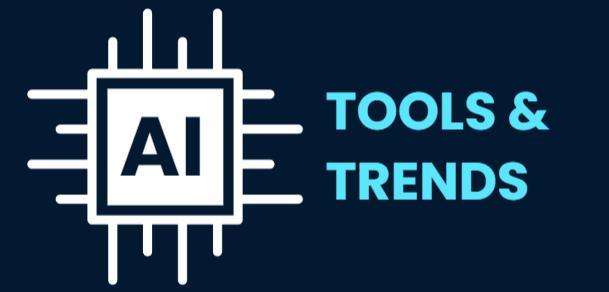
Natural Language Generation (NLG) is a branch of artificial intelligence (AI) that enables computers to produce natural language texts from data or other inputs.
NLG can be used for various purposes, such as generating summaries, reports, captions, headlines, stories, and more.
But what exactly is NLG and how does it work? What are the benefits and challenges of using NLG for content creation? And what are some of the best tools and examples of NLG in action?
In this article, we will answer these questions and give you everything you need to know about NLG and its applications.
What is Natural Language Generation (NLG)?
Natural Language Generation (NLG) is the process of creating natural language texts from non-linguistic data or other inputs.
NLG can be seen as the opposite of natural language understanding (NLU), which is the process of extracting meaning from natural language texts.
NLG typically involves three steps:
¡》Content determination:
This is the step where the system decides what information to include in the output text, based on the input data and the goal of the text.
¡¡》Text planning:
This is the step where the system organizes the information into a coherent structure, such as paragraphs, sentences, and clauses.
¡¡¡》Surface realization:
This is the step where the system converts the structure into natural language words, phrases, and punctuation, following the rules of grammar, syntax, and style.
NLG can be further classified into two types:
1. Data-to-text NLG:
This is the type of NLG where the input data is structured, such as numbers, tables, graphs, or databases. The output text is usually factual and descriptive, such as summaries, reports, or explanations.
2. Text-to-text NLG:
This is the type of NLG where the input data is unstructured, such as keywords, topics, or prompts. The output text is usually creative and expressive, such as stories, poems, or jokes.
How Does NLG Work?
NLG systems can use different methods and techniques to generate natural language texts, depending on the type and complexity of the input data and the output text.
Some of the most common methods are:
¡》Rule-based NLG:
This is the method where the system uses predefined rules and templates to generate texts from data. The rules and templates are usually based on linguistic and domain knowledge, such as grammar, syntax, vocabulary, and logic.
Rule-based NLG systems are fast and accurate, but they require a lot of manual effort and expertise to create and maintain the rules and templates.
They also tend to produce rigid and repetitive texts that lack variation and creativity.
¡¡》Statistical NLG:
This is the method where the system uses statistical models and algorithms to learn from large collections of data and texts, and generate texts based on the patterns and probabilities.
Statistical NLG systems are more flexible and adaptable, but they require a lot of data and computational resources to train and run the models and algorithms.
They also tend to produce noisy and inconsistent texts that may contain errors and inaccuracies.
¡¡¡》Neural NLG:
This is the method where the system uses neural networks and deep learning to learn from data and texts, and generate texts based on the semantic and syntactic features.
Neural NLG systems are more powerful and capable, but they require even more data and computational resources to train and run the neural networks and deep learning models.
They also tend to produce fluent and coherent texts that may capture the style and tone of the input data and texts.
What are the Benefits of Using NLG for Content Creation?
NLG can offer many benefits for content creation, such as:
- Saving time and money:
NLG can automate the process of content creation, reducing the need for human writers and editors.
This can save a lot of time and money, especially for large-scale and repetitive content tasks, such as generating product descriptions, news articles, or social media posts.
- Enhancing quality and consistency:
NLG can ensure the quality and consistency of the content, following the standards and guidelines of the domain and the audience.
This can improve the accuracy, clarity, and relevance of the content, as well as the credibility and trustworthiness of the source.
- Increasing productivity and efficiency:
NLG can increase the productivity and efficiency of the content creators,allowing them to focus on more creative and strategic aspects of the content, such as planning, designing, and optimizing.
This can also enable them to produce more content in less time, and reach more audiences and markets.
- Boosting engagement and conversion:
NLG can boost the engagement and conversion of the content, by generating personalized, customized, and optimized content for different purposes, platforms, and audiences.
This can also increase the satisfaction, loyalty, and retention of the customers and users.
What are the Challenges of Using NLG for Content Creation?
NLG can also pose some challenges for content creation, such as:
- Lack of data and resources:
NLG requires a lot of data k resources to train and run the systems, which may not be available or accessible for some domains and applications.
This can limit the scope and quality of the content that can be generated, as well as the scalability and reliability of the systems.
- Lack of control and transparency:
NLG systems may not always generate the desired or expected content, due to the complexity and variability of the data and the texts.
This can cause some issues with the control and transparency of the content generation process, such as how the systems make decisions, what criteria they use, and how they handle errors and biases.
- Lack of creativity and originality:
NLG systems may not always generate the most creative and original content, due to the limitations and constraints of the data and the texts.
This can affect the novelty and diversity of the content, as well as the authenticity and uniqueness of the source.
- Lack of ethics and responsibility:
NLG systems may not always generate the most ethical and responsible content, due to the potential and risks of the data and the texts.
This can have some implications for the ethics and responsibility of the content, such as how the systems respect the privacy, security, and rights of the data and the texts, and how they avoid the misuse, abuse, and harm of the content.
What are Some of the Best Tools and Examples of NLG in Action?
NLG has been widely used and applied in various domains and applications, such as:
¡》Business and marketing:
NLG can be used to generate content for business and marketing purposes, such as product descriptions, reviews, testimonials, ads, slogans, headlines, and more.
Some of the best tools and examples of NLG for business and marketing are:
- [Copysmith] (https://copysmith.ai/):
A tool that uses GPT-3 to generate high-quality and catchy copy for ads, landing pages, product descriptions, and more.
- [Phrasee](https://phrasee.co/):
A tool that uses natural language generation and deep learning to generate optimized and personalized email subject lines, headlines, and CTAs.
- [Narrative Science] (https://narrativescience.com/):
A tool that uses natural language generation and analytics to generate insightful and actionable narratives from data.
¡¡》Education and learning:
NLG can be used to generate content for education and learning purposes, such as summaries, quizzes, feedback, explanations, and more.
Some of the best tools and examples of NLG for education and learning are:
- [Quill] (https://www.quill.org/):
A tool that uses natural language generation and processing to provide personalized and adaptive writing feedback and instruction for students and teachers.
- [Quizlet] (https://quizlet.com/):
A tool that uses natural language generation and processing to create and study flashcards, games, and tests for various subjects and topics.
- [Duolingo] (https://www.duolingo.com/):
A tool that uses natural language generation and processing to provide interactive and gamified language learning experiences for learners and teachers.
¡¡¡》Entertainment and media:
NLG can be used to generate content for entertainment and media purposes, such as stories, poems, jokes, songs, captions, and more.
Some of the best tools and examples of NLG for entertainment and media are:
- [OpenAI Jukebox] (https://openai.com/blog/jukebox/):
A tool that uses neural networks and deep learning to generate music and lyrics in various genres and styles.
- [Botnik] (https://botnik.org/):
A tool that uses predictive text and natural language generation to create and remix texts in various formats and genres, such as scripts, stories, tweets, and more.
- [This X Does Not Exist] (https://thisxdoesnotexist.com/):
A collection of tools that use generative adversarial networks (GANs) and natural language generation to create realistic and fake images and texts of various things, such as faces, cats, art, and more.
Conclusion
Natural Language Generation (NLG) is a fascinating and powerful technology that can revolutionize the way we create and consume content.
NLG can offer many benefits for content creation, such as saving time and money, enhancing quality and consistency, increasing productivity and efficiency, and boosting engagement and conversion.
However, NLG can also pose some challenges for content creation, such as lack of data and resources, lack of control and transparency.
RELATED ARTICLES
- Natural Language Processing (NLP)|What Is It & How Does it Work? : A Comprehensive Guide









